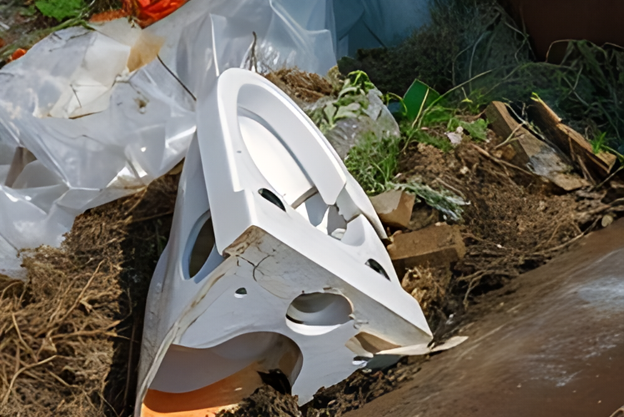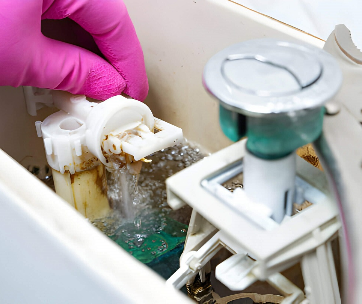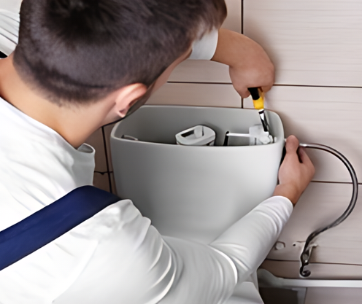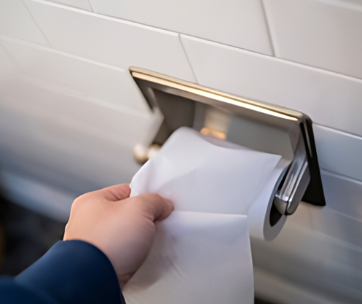How to Fix a Cracked Toilet Bowl
When dealing with a cracked toilet bowl, it is crucial to act quickly to prevent any potential leaks and avoid further damage. Cracks in the toilet bowl can occur due to a variety of reasons such as age, impact, or wear and tear. It is essential to assess the severity of the crack before proceeding with any repair or replacement.
If the crack is minor, a temporary solution such as repairing the bowl with epoxy or sealant might work. However, it is essential to keep in mind that this is only a temporary fix and may not last long-term. It is also crucial to ensure that the repair is done correctly to prevent any further damage or leaks.
In case of severe cracks, a complete replacement of the toilet bowl is often necessary for a long-term solution. Replacing the toilet bowl may seem like a daunting task, but it is essential to ensure that it is done correctly to prevent any future issues. It is recommended to seek professional help for the replacement to ensure that it is done correctly and safely.
We will walk you through both temporary fixes and the steps involved in replacing a cracked toilet bowl, ensuring you can address the issue effectively and restore the functionality of your bathroom fixture.
Here is a step-by-step basic guide:
Temporary Fix for Small Cracks
Materials Needed:
- Epoxy adhesive or waterproof sealant designed for ceramics
- Sandpaper
- Clean cloth
Steps:
1. Clean the Crack
In order to properly prepare the cracked toilet area for repair, you will use adhesive or sealant product sand to clean around the affected area. This will ensure that the surface is clean and free from any debris or old sealants that may interfere with the repair process. Be sure to use sandpaper with fine grit to avoid damaging the porcelain surface of the toilet. Once you have finished sanding, wipe the area clean with a damp cloth to remove any remaining dust or debris before proceeding with the repair.
2. Apply the Sealant or Epoxy
When dealing with a cracked toilet bowl, use the right adhesive or sealant product. The first step is to carefully read and follow the instructions provided by the manufacturer of the product. These instructions are typically included on the packaging, or you can find them online.
When it comes to applying the adhesive or sealant, be generous in its use. Apply it over the cracked area of the toilet bowl, making sure to cover it entirely. It's also essential to extend the adhesive or sealant slightly beyond the edges of the crack to ensure that it creates a strong, lasting bond.
It's worth noting that different products may have specific drying or curing times, so be sure to follow the manufacturer's instructions regarding how long to wait before using the toilet again. Following these steps should result in a successful repair and a fully functional toilet bowl.
3. Let it Dry
After applying the sealant or epoxy, give it enough time to dry completely before using the surface. It is recommended to follow the instructions provided by the product's manufacturer to ensure that the sealant or epoxy dries effectively. Generally, the drying process may take several hours, but in some cases, it could take up to a day. To ensure that the sealant or epoxy sets properly, avoid touching or using the surface until it is completely dry.
4. Test the Repair
After drying and cleaning the toilet, flush it and observe carefully for any signs of water leakage. Check the base of the toilet, the supply line, and the tank for any signs of water seeping out. You can also use tissue paper to detect any moisture around the base of the toilet. If you notice any leaks, it's important to fix them as soon as possible to avoid water damage and high water bills.
Permanent Fix to Cracked Toilet Bowl
If you notice a significant crack in your toilet bowl, or if the temporary fix you applied doesn't hold up for long, you might want to consider replacing the entire toilet bowl. This is a long-term solution that can prevent further damage to your bathroom and ensure the proper functioning of your toilet.
Replacing a toilet bowl may involve removing the old bowl, installing a new one, and connecting it to the plumbing system. Ensure the new bowl fits properly and is securely fastened to avoid leaks or other issues. You can hire a professional plumber to do the job for you or try to replace the toilet bowl yourself if you have experience and the necessary tools.
To replace the toilet bowl successfully, follow this procedure:
1. Turn off Water Supply in the Toilet
To turn off the water supply to your toilet, you will need to locate the shut-off valve. This valve is usually located near the toilet's base, close to the floor. Once you have located the valve, turn it clockwise until it is fully closed. This should shut off the flow of water to the toilet. Turn off the water supply before attempting any repairs or maintenance on your toilet to prevent any potential water damage or flooding.
2. Remove the Toilet
Remove the toilet after turning off the water supply valve, disconnect the water supply line that connects the toilet tank to the valve. Next, locate the bolts that secure the toilet to the floor. Use a wrench to loosen and remove these bolts. Once the bolts are removed, gently lift the toilet off the floor and place it aside. Be careful and avoid tipping the toilet to prevent any damage or spills.
3. Replace the Bowl
When replacing the cracked toilet bowl, carefully read and follow the manufacturer's instructions for installing the new bowl. This may involve a number of steps, such as removing the old toilet bowl, cleaning the area thoroughly, and ensuring that the new bowl is appropriately aligned and secured in place.
Additionally, it is essential to set a new wax ring between the base of the toilet and the floor to prevent leaks and ensure a tight seal. Taking the time to complete each step carefully and accurately will help to ensure a successful and long-lasting installation.
4. Reconnect Water Supply and Test
After installing a new toilet or repairing an existing one, it is important to ensure that it is securely fixed in place, the water supply is properly reconnected, and there are no leaks. To do this, first, check that the toilet is level and stable, and adjust its position if necessary. Then, tighten the bolts that hold the toilet base to the floor, making sure not to over-tighten them as this can cause damage.
Once you are satisfied that the toilet is securely in place, turn on the water supply and check for any leaks around the base of the toilet or at the connection points. Finally, flush the toilet a few times and observe if there are any issues such as slow drainage or water leakage. If you notice any problems, you may need to make adjustments or seek professional assistance to fix them.
Factors to Consider When Repairing or Replacing Cracked Toilet Bowl
1. Safety
When working with chemicals or dealing with a cracked toilet bowl with sharp edges, take proper safety precautions. This includes wearing protective gear such as goggles, gloves, and a face mask to prevent harm to your eyes, skin, or respiratory system. Make sure to handle any sharp objects with care and avoid any unnecessary risks that could lead to injury. By taking these precautions, you can ensure that you are working safely and effectively.
2. Consult a Professional
If you don't feel confident about repairing the toilet bowl yourself, it is always advisable to consider hiring a professional plumber to help you out. A professional plumber has the required skills and expertise to diagnose the problem correctly and provide a suitable solution. They have the necessary tools and equipment to do the job efficiently and effectively.
Moreover, professional plumbers have the experience and knowledge to ensure that the repair work is carried out safely and in compliance with all applicable regulations. By hiring one, you can avoid the risk of further damage to your toilet and the potential costs that may arise from a botched repair job.
Conclusion
It is extremely important to address a cracked toilet bowl as soon as possible to prevent any potential leaks and further damage to your toilet. A cracked toilet bowl can lead to water damage, which can be costly and stressful to deal with. Whether you opt for a temporary fix or a complete replacement, ensuring the integrity of your toilet bowl is crucial for maintaining a functional and efficient bathroom.
Temporary solutions such as sealants or patches might offer a quick fix to your toilet bowl, but they are not a long-term solution. Such solutions can often fail over time, leading to more damage and costly repairs. In most cases, a long-term solution requires replacing the bowl entirely to ensure lasting reliability.
Moreover, regular maintenance and swift action can help you avoid future issues. This includes checking your toilet bowl regularly for any signs of damage, such as cracks or chips. If you notice any damage, it is essential to address it immediately to prevent the problem from worsening.
A cracked toilet bowl can cause significant problems if not addressed promptly. Whether you opt for a temporary or long-term solution, ensuring the integrity of your toilet bowl is critical for maintaining a functional and efficient bathroom. Regular maintenance and quick action can help you avoid future issues, ensuring a smoothly functioning toilet for years to come.





